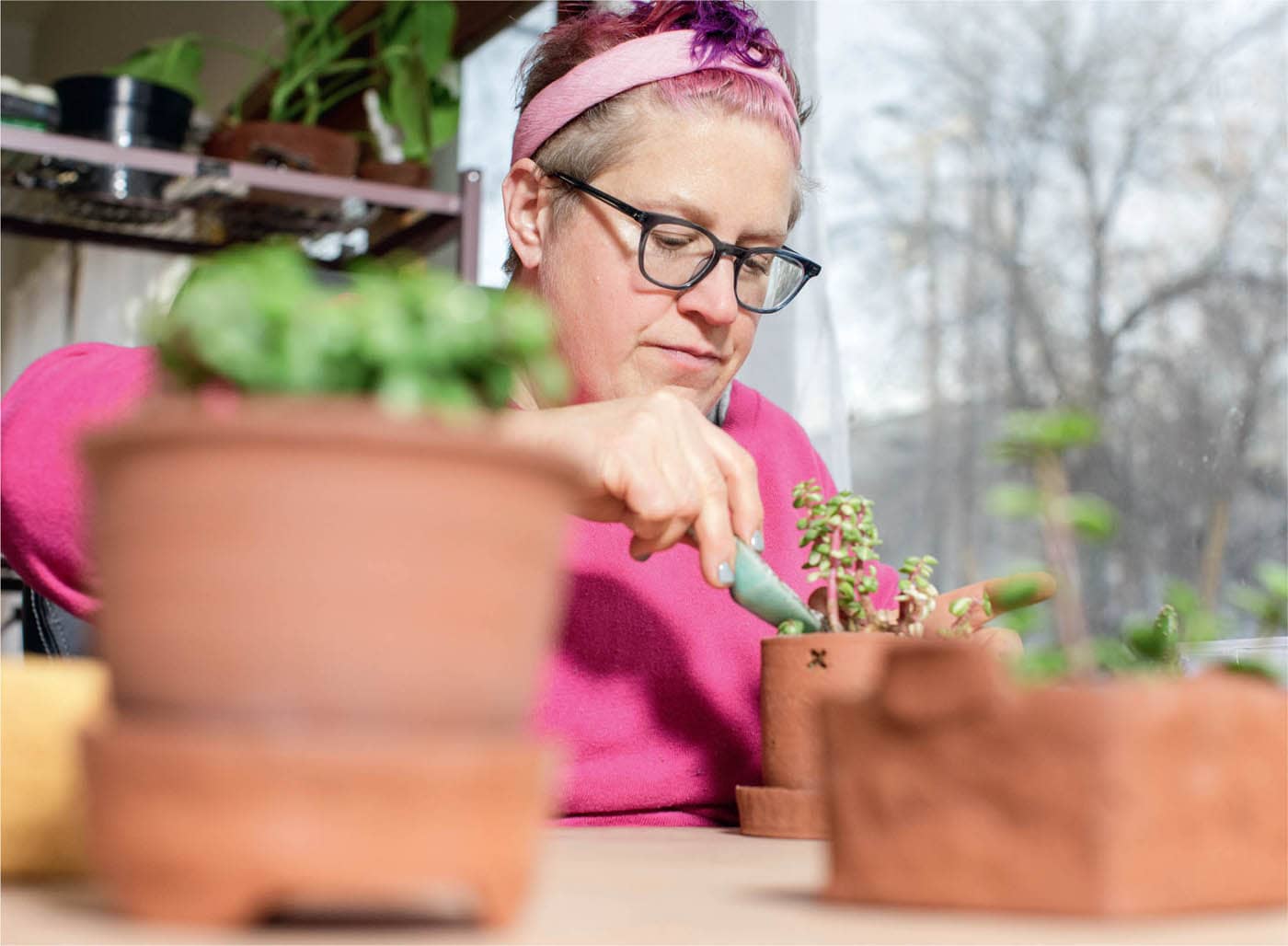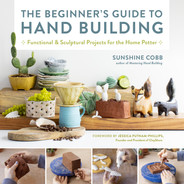INTRODUCTION

Welcome to the mysterious and magical world of clay. Yes, I think clay is its own world! It has its own language and its own paths to navigate, and along the way you’ll learn that skills must be developed and practiced to succeed. You will have amazing discoveries and learn a few hard lessons along the way. I am here as your guide as you venture into this new world. However, I am but a guide: you are the adventurer who will lead this journey. (This is a pick-your-own-adventure kind of book. Are you ready?!)
This is a project book, sure, but I’ve tried to keep everything open-ended. You’ll make choices and solve puzzles that are unique to your version of each project. By following the basic scope of each tutorial, you will learn new skills and continue to build a foundation of ceramic knowledge. I hope you’ll also find some sparks that fire up your creative brain to continue the journey well beyond this book. I see opening this book and jumping into the projects as the first step in your journey—one that, if you choose, can continue throughout your life.
Before we begin, let me just say it: I am happy you have found clay! I welcome you to the ceramics community, with all its flaws. I have been lucky over the course of my career to visit hundreds of studio spaces. From grade schools, high schools, and colleges to large craft institutions and local community center clay rooms, each is unique. (Although they have similar setups and smells and kiln rooms.) I have only ever been a visitor in most of those spaces, there for a day, a week, or a few months, teaching workshops, demonstrating, or being a sabbatical replacement instructor. I have never worked in a community or school studio for more than about three years.
Believe it or not, it took me more than fifteen years as a professional to invest in equipment of my own because I moved around so much. I followed opportunities and made do with what ceramics spaces I could piece together; sometimes that meant making in one space, firing in another, and finishing the work in a third space. I feel like the label of nomadic potter was invented for me. But really so many people piece meal their studio spaces together from a random assortment of availablity and access. When the pandemic hit, so many folks lost access to their creative spaces. This forced me to think about what was truly essential to my making practice, and what I could do at the kitchen table. Although ceramics requires access to some equipment, hand building is extremely adaptable to almost any place you can set up a table. The clay and tools used for most projects can fit in a small box. Never let the lack of a classic studio space hold you back!
Even if you are working on these projects in a solitary nature at home, keep in mind there is a community of makers out there, and we can connect online, if not in person, anytime. So many folks reached out after my first book was published to let me know I was the only teacher they had access to. They sat at their tables, hand building, with my words on the pages in front of them for company. What I have learned from my twenty years of studio practice—and what lockdown confirmed—is that we are not alone on this creative journey. There is someone somewhere pinching clay at the same time you are. Even if we are sitting at our tables working slowly and steadily, I believe our paths will cross someday. We can share our love of this amazing material and what we have learned about ourselves along the way. In this way, too, clay creates its own world.
Okay, let’s get going!

